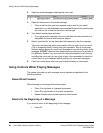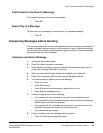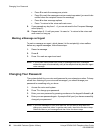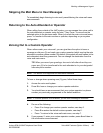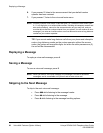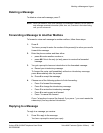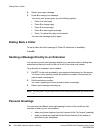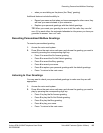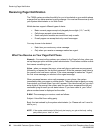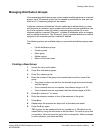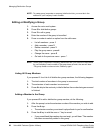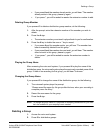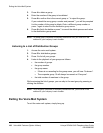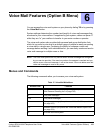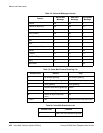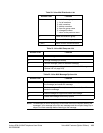
Receiving Pager Notification
96 Voice Mail Features (Option A Menu) Linksys SPA-941/942 Telephone User Guide
620-05600390
Receiving Pager Notification
The T6000 system provides the ability for you to be alerted on your mobile phone
or pager that you have received a voice message. You must set this service up with
your system administrator or via Web Portal.
Mobile devices support different types of alerts:
• Basic numeric pages accept only keypad phone digits (1-0, * and #).
• Cell phones support voice streaming.
• Some cell phone models can receive text-only e-mails.
• E-mail pagers can accept text-only e-mail messages.
You may choose to be alerted:
• Each time you receive any voice message.
• Only when you receive a message marked as urgent.
What You Receive on Your Pager/Cell Phone
Numeric - You receive the numbers you entered in the Pager Info box; when you
set up the pager option with the system administrator. The number could be a code
that means something to you.
Voice - when you answer the page, voice mail plays a welcome announcement
followed by a request for the account password. Enter the password and listen to
the normal voice mail menu options. If the voice message is marked as "Urgent",
the first voice message you receive is the urgent message.
When someone leaves a voice mail message on your phone, the system
immediately dials your pager or cellular phone. The system tries to reach you every
five minutes, up to three times if you don’t answer. If you take the call, but you don’t
enter digits at the prompt, the system acts like you never answered the call and
continues trying to reach you as stated above. If you have caller id, your “office”
phone number/name is displayed as the caller.
E-Mail -The message you receive, reads as follows:
Subject: Voice Mail from calling party
Body: the text entered by the system administrator (i.e. Please call me! I need to
talk to you.)
NOTE: If the system administrator left the body text empty, you get as the body: calling
party called you on “date” at “time”.



